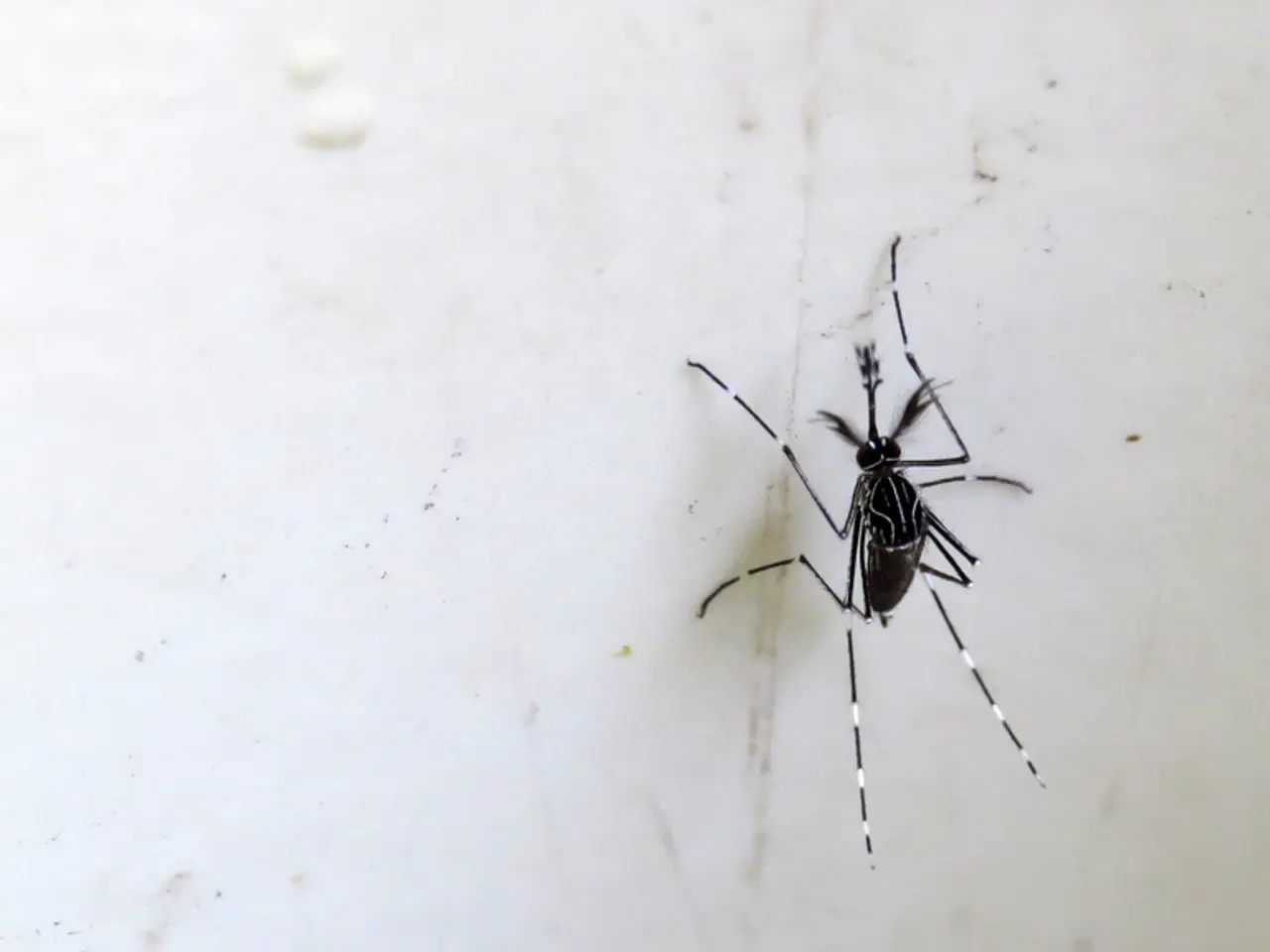China intensifies efforts against chikungunya virus spread
China Takes Aggressive Measures to Combat Chikungunya Outbreak
The Chinese government is taking extensive steps to combat the ongoing chikungunya virus outbreak, particularly in Guangdong Province. The outbreak, which is the largest recorded in China, has been focused largely on the manufacturing hub of Foshan near Hong Kong.
Mass Mosquito Eradication Efforts
The main strategy to combat the chikungunya virus is mass mosquito eradication. This includes the use of insecticides and drones for fogging to reduce the population of Aedes mosquitoes, which transmit the virus.
Targeted Vector Control
Adulticide spraying and the elimination of mosquito breeding sites within a 100-meter radius around confirmed case locations, such as patients' homes, workplaces, and common areas, are also part of the targeted vector control efforts.
Use of Biological Controls
China is also using biological controls to reduce mosquito larvae populations. This includes the use of larvae-eating fish in water bodies.
Community Isolation and Quarantine
Community isolation and quarantine of infected individuals is another key measure being taken to limit the spread of the virus. Public health surveillance with daily case reporting and household-level inspections are also being implemented.
Expansion of Hospital Capacity
To accommodate the influx of cases, the Chinese government has expanded hospital capacity, preparing tens of thousands of mosquito-proof beds.
Legal Enforcement and Fines
In addition to these measures, there are legal consequences for non-compliance with mosquito control measures. Enforced bed netting and inspections are being carried out, and fines of up to 10,000 yuan (€1,208) can be imposed for not disposing of standing water.
Water Source Monitoring and Systematic Removal of Breeding Sites
Community-level mosquito control is also being implemented through water source monitoring and the systematic removal of breeding sites.
These integrated public health and vector management approaches are critical to controlling the epidemic, as the chikungunya virus, which causes fever and joint pain similar to dengue fever, has been reported in more than 7,000 cases in China this year, with signs of the numbers of new cases slowly dropping.
The outbreak has also been reported in other countries, including France, Italy, Brazil, and island nations in the Indian Ocean. In response, some countries have issued travel advisories for China's Guangdong province. The United States has even issued a travel advisory telling citizens not to visit China's Guangdong province.
Despite the criticism, China appears determined to eliminate the chikungunya outbreak and avoid public and international criticism. The outbreak in Foshan was briefly controlled by a two-week home quarantine, which was later dropped. Authorities are now taking preventive measures such as spraying disinfectant, fining people for not disposing of standing water, and deploying drones to hunt down insect breeding grounds.
Reports have also emerged of attempts to stop the spread of the virus using fish that eat mosquito larvae and larger mosquitoes that eat virus-carrying insects. These measures, which are reminiscent of COVID-19 protocols, are tailored toward vector control and chikungunya transmission interruption.
Heavy rains and high temperatures have worsened the crisis in China, but the Chinese government is working tirelessly to combat the outbreak and protect its citizens.
- The chikungunya virus outbreak in China necessitates extensive measures, focusing primarily on Foshan, near Hong Kong.
- The Chinese government's main strategy to combat the chikungunya virus is mass mosquito eradication.
- Insecticides and drones for fogging are utilized to reduce the population of Aedes mosquitoes.
- Adulticide spraying and the elimination of mosquito breeding sites within a 100-meter radius of confirmed case locations are part of targeted vector control efforts.
- China uses biological controls to reduce mosquito larvae populations, such as larvae-eating fish in water bodies.
- Community isolation and quarantine of infected individuals is a crucial measure to limit the spread of the virus.
- Public health surveillance with daily case reporting and household-level inspections are being implemented.
- To accommodate the influx of cases, hospital capacity has been expanded, preparing tens of thousands of mosquito-proof beds.
- Non-compliance with mosquito control measures can result in fines of up to 10,000 yuan (€1,208).
- Enforced bed netting and inspections are being carried out to ensure compliance.
- Community-level mosquito control is also being implemented through water source monitoring and the systematic removal of breeding sites.
- The chikungunya virus, which causes fever and joint pain similar to dengue fever, has been reported in more than 7,000 cases in China this year.
- The numbers of new cases in China are slowly dropping.
- The outbreak has also been reported in France, Italy, Brazil, and island nations in the Indian Ocean.
- Some countries have issued travel advisories for China's Guangdong province.
- The United States has even issued a travel advisory telling citizens not to visit China's Guangdong province.
- Despite the criticism, China appears determined to eliminate the chikungunya outbreak.
- The outbreak in Foshan was briefly controlled by a two-week home quarantine, which was later dropped.
- Authorities are now taking preventive measures such as spraying disinfectant and fining people for not disposing of standing water.
- Drones are being deployed to hunt down insect breeding grounds.
- Reports have emerged of attempts to stop the spread of the virus using fish that eat mosquito larvae and larger mosquitoes that eat virus-carrying insects.
- These measures are reminiscent of COVID-19 protocols, tailored toward vector control and chikungunya transmission interruption.
- Heavy rains and high temperatures have worsened the crisis in China.
- The Chinese government is working tirelessly to combat the outbreak and protect its citizens.
- In the realm of environmental science, climate change can exacerbate conditions that favor mosquito breeding.
- Global health, represented by the fight against chronic diseases and mental health stigma, intersects with this crisis.
- Investing in scientific research and development of vaccines and therapeutics plays a vital role in these dynamic health and wellness challenges.
- Fitness and exercise can boost the immune system, contributing indirectly to resistance against the chikungunya virus and other infectious diseases.




